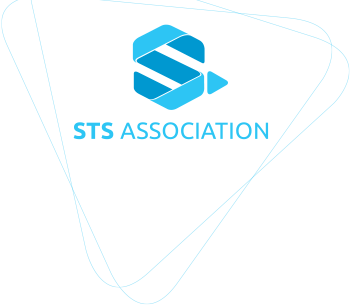

What is the STS and who is the STS Association?
What is the STS and who is the STS Association?
WHAT IS THE STANDARD TRANSFER SPECIFICATION?
The Standard Transfer Specification (STS) describes a secure message system for carrying information between a point-of-sale and a meter, and is currently finding wide application in electricity metering and payment systems. STS is not limited to this application (see the section: Future enhancements), but because of the wide interest in this area, this document describes the electricity application. STS is an international industry standard described in IEC62055-41, -51 and -52.
The STS specification does not specify any physical characteristics (such as shape or size) of a prepayment meter. Please note that only the following three specification documents are applicable for STS certification: IEC62055-41, -51 and -52 – any other documents linked from the STS website are for general background information (or as implementation examples) only.
WHAT IS AN ELECTRICITY METERING & PAYMENT SYSTEM?

The sketch above illustrates a typical system. The example illustrates a consumer making a payment at the vending station and a token being generated to pass the information concerning this payment on to the meter. To date, disposable magnetic card tokens, as well as number based tokens for keypad entry at the meter, or via online entry using DLMS protocols, are using the STS standard to transfer the information. STS is centered around the information transferred to the meter – this includes the manner in which the vending station encodes the token with the information, and the way in which the meter decodes and interprets the information.
WHY USE THE STANDARD TRANSFER SPECIFICATION?
Critical to the successful operation of any payment system are the issues of security and inter-operability of equipment supplied by different manufacturers. STS fully addresses these key issues:
SECURITY IS OF PRIME IMPORTANCE
Security issues are of prime importance to the utility supplier and the consumer. The use of the STS standard prevents:
- Fraudulent transfer of credit resulting from hit and miss attempts at entering the correct number;
- Fraudulent generation of tokens from a stolen vending station;
- Fraudulent generation of tokens from legitimate vending stations outside of the utility’s area;
- Fraudulent re-use of tokens which have already been used;
- Tampering of legitimate tokens e.g. to change the value
STS provides the facility of generating (e.g. credit transfer) tokens which can only be used by the intended meter, and furthermore in the case of credit tokens, can only be used once in that meter.
In order to achieve the above security, the standard defines the following:
- The use of advanced encryption techniques, which are at all times hidden from the consumer – the system is easy to use.
- The use of very secure key management procedures, including the manner in which keys are generated and transported.
- The required security functionality at both the vending station and the meter.
INTER-OPERABILITY OPENS PROCUREMENT TO MULTIPLE MANUFACTURERS
Users have long struggled with various systems performing the same or similar functions but which are not compatible with one another, and with components of these systems which are not inter-operable with those from different manufacturers or suppliers.
STS is an open system specification which defines transfer tokens which may be generated at compliant vending systems manufactured or supplied by any of a number of suppliers, and used in STS compliant meters from any one of a number of suppliers. The functionality at the vending station and the response of meters to certain transfer numbers is also specified in order to achieve inter-operability. This allows utilities to mix and match equipment from suppliers of their choice.
STS ensures inter-operability between system components from different manufacturers, by:
- Ensuring that manufacturing members make encryption keys available to other manufacturers at the request of the utility using the equipment;
- Accrediting and maintaining a list of equipment test laboratories which ensure correct STS functionality of equipment;
- Ensuring consistent and unique manufacturer identity codes and meter serial numbers
WHAT IS THE HISTORY OF THE STS SPECIFICATION AND OF THE STS ASSOCIATION?
The STS Standard Transfer Specification was initiated by Eskom (the major South African electricity utility) in 1993 through their need to develop compatibility between meters and vending systems from different suppliers. Also paramount was the need to ensure sufficient system security to prevent fraud. The STS venture has been a considerable success, and has enabled different manufacturers vending systems to provide compatible tokens/credit transfer to any STS compliant meter (from a number of manufacturers).
THE ASSOCIATION WAS ESTABLISHED IN 1996
During 1997 the STS Association was formed to take over the STS technology, maintain the necessary infrastructure, promote the technology internationally, and further develop the standard to meet emerging international demands for additional functionality.
It is a non profit association of members, championed by the founder members: Conlog (Pty)Ltd., Energy Measurements (Pty)Ltd., Eskom, and Schlumberger Measurement and Systems (Pty)Ltd.
The main motivating factors for establishing the Association were as follows:
- Transfer the responsibility for the maintenance and enhancement of STS to the manufacturers;
- Provide the manufacturers with a stake in STS and thereby ensure that they support its use outside the context of Eskom;
- The Association would be better placed to provide STS support services to parties outside Eskom.
Objectives include:


Technical guides

Accreditation testing

Maintaining an approved accreditors register

Maintaining an approved list of STS-compliant equipment

Key Management, Key Security, and certification

MEMBERSHIP OF THE ASSOCIATION
All parties that are interested in the technology and who agree to participate in furthering the aims and objectives of the Association are encouraged to join the Association. Interested parties could include utilities (electricity, water, gas and other), vending equipment or meter manufacturers, standardisation entities, consultants, academics and others involved in this type of market/technology.
The Association has two CLASSES of membership: voting and non-voting.
Voting members are able to influence/participate in the administration and future development of the technology.
Within the voting class (apart from the founder members) there are a number of CATEGORIES of membership (for example: meter manufacturer, vending manufacturer, etc.). Each category of members has the opportunity, once every two years, to elect a director from within its own ranks to represent their interests on the board of directors of the Association for a period of two years.
OWNERSHIP OF THE TECHNOLOGY AND ASSOCIATED INTELLECTUAL PROPERTY
The Association owns the STS technology and licenses manufacturers to use it.
Security
The STS Association carries out the necessary functions to assure the security of STS systems. These include the following:
- Obtaining the agreement of manufacturers on rules regarding the handling of confidential information and procedures
- Approving equipment and processes for generating and transferring of encryption keys
REFERENCES AND ACRONYMS
- IEC – The International Electrotechnical Commission is an international body which generates standards relating to electrical systems – It’s Technical committee TC13 is responsible for electricity metering, and working group WG15 for payment systems.
- DLMS – ‘Device Language Message Specification’ is a protocol allowing meters and meter system components from different manufacturers to communicate with one another.
